Dungeons & Dragons: Onslaught review - "Novel enough to tempt even jaded skirmish gamers"
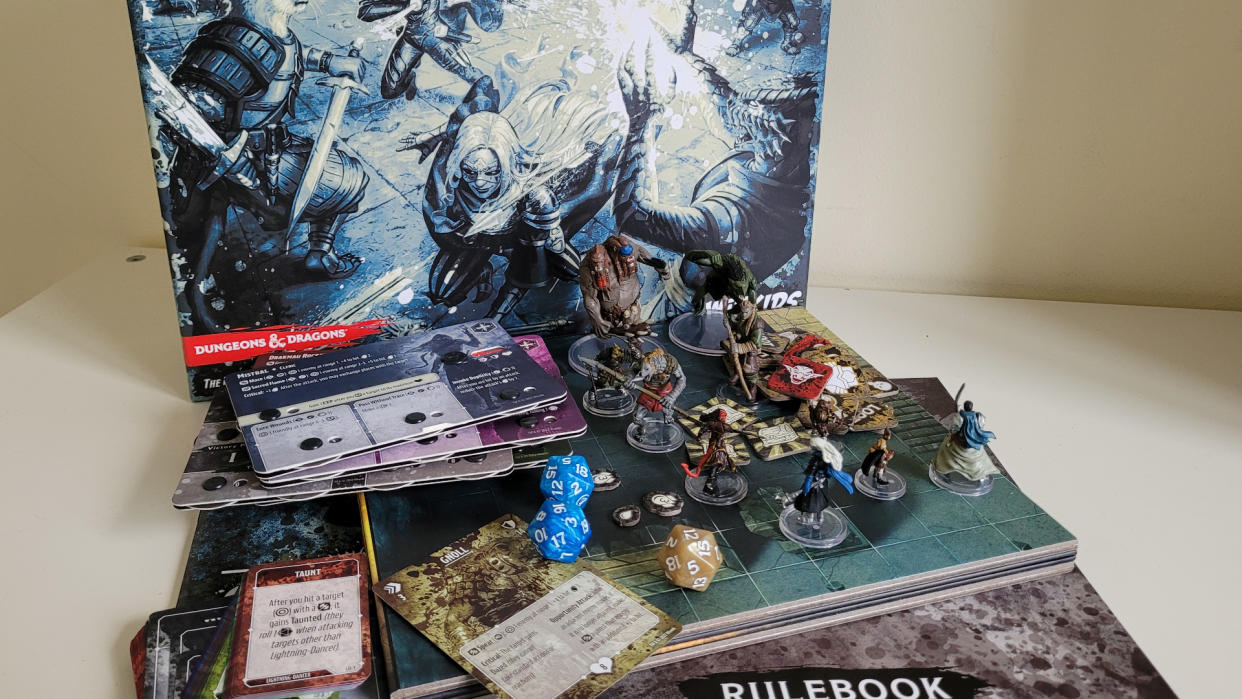
- Oops!Something went wrong.Please try again later.
If there’s one genre of games that’s overcrowded, it’s miniatures skirmish titles like Dungeons & Dragons: Onslaught. It’s competing shoulder-to-shoulder with excellent titles like the Unmatched series or Games Workshop’s Warhammer Underworlds. It also has significant competition from related hobby sectors like military wargaming and miniatures games. It needs to work hard to make itself stand out, so besides the colossal draw of that D&D license, what can Onslaught do to attract our attention?
Dungeons & Dragons: Onslaught - features
One of the most striking things about Dungeons & Dragons: Onslaught is notable as soon as you open the box: it’s crammed with pre-painted Wizkids miniatures. They’re not great sculpts, being made of bendy plastic, and they’re not great paint jobs either, but they still look better than bare figures on the tabletop. There are some big figures in there, too, including a hulking ettin and a multi-part Black Dragon.
You’ll be pressing this multitude of plastic into service as part of a skirmish combat game. There’s a two-sided board with a dungeon room on each side that needs to be set up with loot and monsters according to which of the 10 scenarios you’re playing. Once that's out of the way there are two teams to choose from that are straight out of Dungeons and Dragons books (the good Harpers and the evil Zhentarim), so players pick a side and set up their models. More faction teams will be available for the game via expansions.
How does it work?
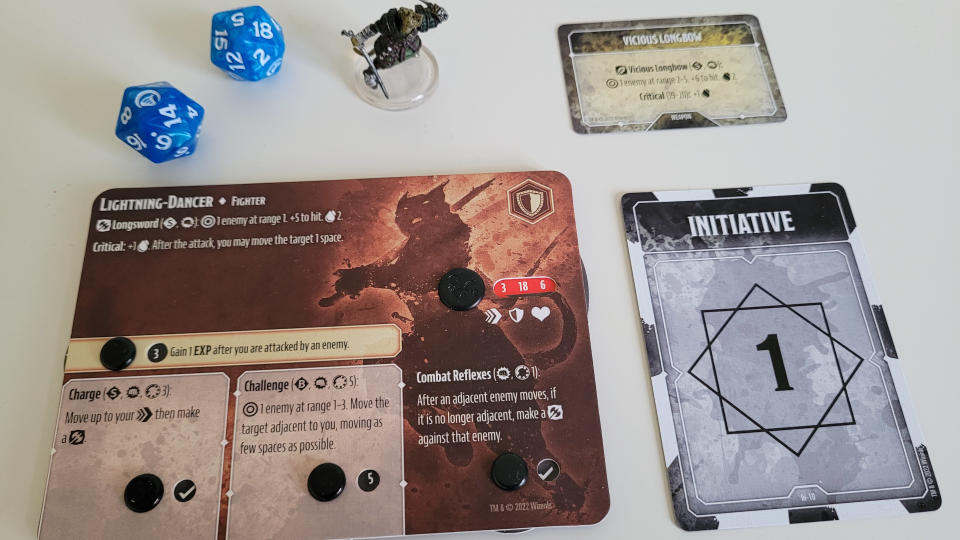
Mechanics are very similar to D&D
Varied objectives that go beyond defeating the other player
Items and treasure can shake up character powers
If you’re familiar with fifth edition Dungeons & Dragons, you’ll find Onslaught fairly easy to learn as it’s based closely on the combat rules from the role-playing game. Others may find it a harder ask, but it’s not too difficult and includes a play-through of the first scenario.
To begin with, you assign initiative values to your fighters at the start of each turn (just like many of the best tabletop RPGs). They then act in order, with their options being to move, take one standard action, one bonus action, and any number of free actions.
Standard actions are printed on each character’s card, alongside a plethora of dials that track the 'cooldown' time of each one, plus the character’s hit points, movement, and armor class. Many of these actions are attacks, like melee strikes for warrior types through to offensive spells for wizards with various ranges, areas and effects. However, no matter what they are, these attacks are resolved by rolling two 20-sided dice, taking the highest, adding a bonus depending on the attack ability, and comparing the result against the target’s armor class.
As a general rule, incapacitating enemy characters plays second fiddle to the main objective
There are plenty of other abilities to mix it up, though, from heals and buffs to terrain-altering and shape-shifting powers.
Aside from smacking things, looting treasure chests is the most common bonus action. (Although some character abilities are bonus actions.) Free actions, meanwhile, consist of things like equipping items, opening doors, or trading objects with other figures. Items and treasure are important in Dungeons & Dragons: Onslaught because they can give characters significant extra powers, and in some scenarios, they also count toward victory.
How you win the game depends on the scenario you’re playing and, as a general rule, incapacitating enemy characters plays second fiddle to the main objective. That might be controlling something on the map, defeating monsters in the dungeon, or escorting prisoners to an exit. Either way, after a fixed number of rounds - or on occasion a sudden death victory condition - players tot up their victory points to see who wins.
Gameplay
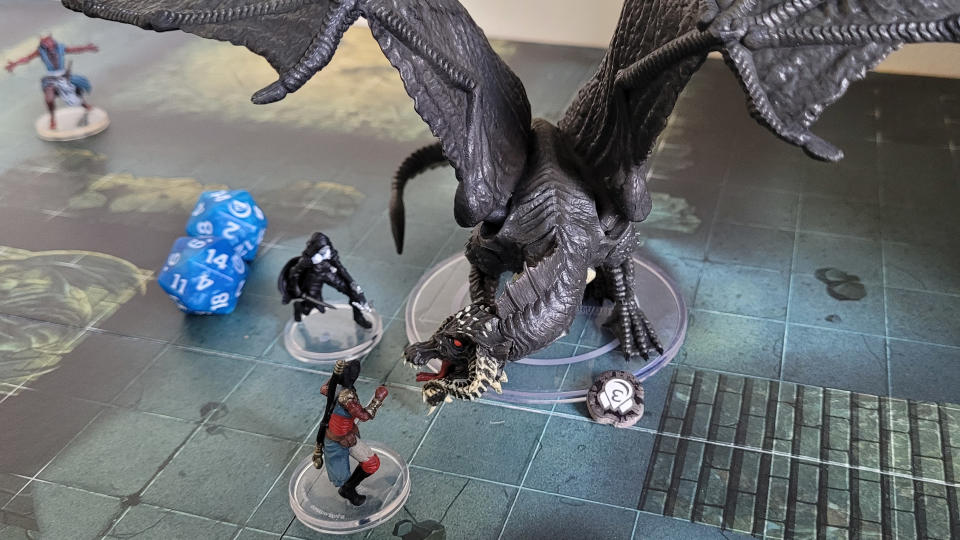
Lots of variety in terms of attacks and powers
… but learning it all takes time, and effort
Range of objectives (and non-player monsters to fight) keeps things fresh
Each faction in the game has six characters, and each character has three or four different abilities they can use, plus more when they start unlocking equipment. That gives the game a richness of decision-making that few of its competitors can match, especially on its relatively accessible rules.
They’re decisions that matter, too. If you’re playing the Harpers, bunching up your characters in a group that makes them an easy target for the enemy sorcerer’s area-effect fireball spell is a mistake you’re only going to make once.
Unless, that is, you know it’s cooling down or you fancy taking a risk that that figure has more pressing priorities like looting a chest or taking out the troll who's bearing down on them at a rate of knots. And if you’ve got the sorcerer on your side it’s very much a question of when to time that precious fireball to best effect, or whether it’s better to save it and use another spell in the meantime. These sorts of timing decisions are everywhere, doubly so when you realize that you have to pick the order of activation at the start of each round, so you need to anticipate in advance how abilities might combine at the right time.
Long-term support
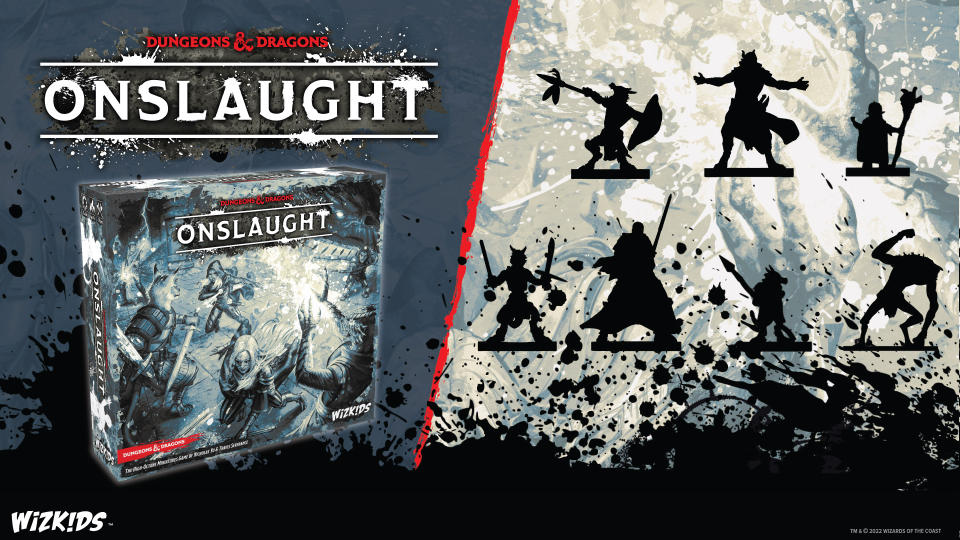
Developer WizKids has already been clear that it's here for the long-haul with Dungeons & Dragons: Onslaught. Rather than being a one-and-done game, it's set to feature multiple new expansions, different factions, and monsters to fight after release. Additionally, it's being designed with an active competitive scene in mind. This means that support for Onslaught shouldn't dry up any time soon, so you're not buying into a system with a limited shelf-life.
Nonetheless, the game’s greatest strength is also its greatest weakness. Planning your turn effectively involves you first having to internalize the 20 or so powers at your disposal, and that’s a lot to learn. Doubly so because you also really need to know those available to your opponent in as much detail, so you can anticipate and avoid them. It takes several games to get to grips with this, and it’s still easy to forget important details in the heat of battle.
Incrementing and decrementing all the cooldown dials, alongside others for hit points, experience and round trackers is also a colossal pain.
Still, the scenarios on offer make good use of the inherent variability in the game to provide a range of interesting challenges. It’s also fun to see the focus the game puts on treasure and monsters which are also pretty novel additions to the skirmish genre. Having a huge Black Dragon on the map is an exciting prospect, and the fact it can defeat both players unless they carefully balance cooperation and competition leads to a fun dynamic. Seven of the scenarios can be combined into a vaguely narrative campaign if so desired, although the game gives newcomers very little background on the Dungeons & Dragons setting so they may be less inspired by the story elements.
Dungeons & Dragons: Onslaught has the potential to provide a lot of fun
Some people will dislike the use of twenty-sided dice, feeling that they add too much randomness to the game and detract from strategy. But the fact players roll two smooths the edge off this problem and it tends to be the bonus numbers involved in each attack that decide the day. Other random factors, like the draw of chest loot, which can sometimes result in unpleasant surprises, are similarly balanced.
Should you buy Dungeons & Dragons: Onslaught?
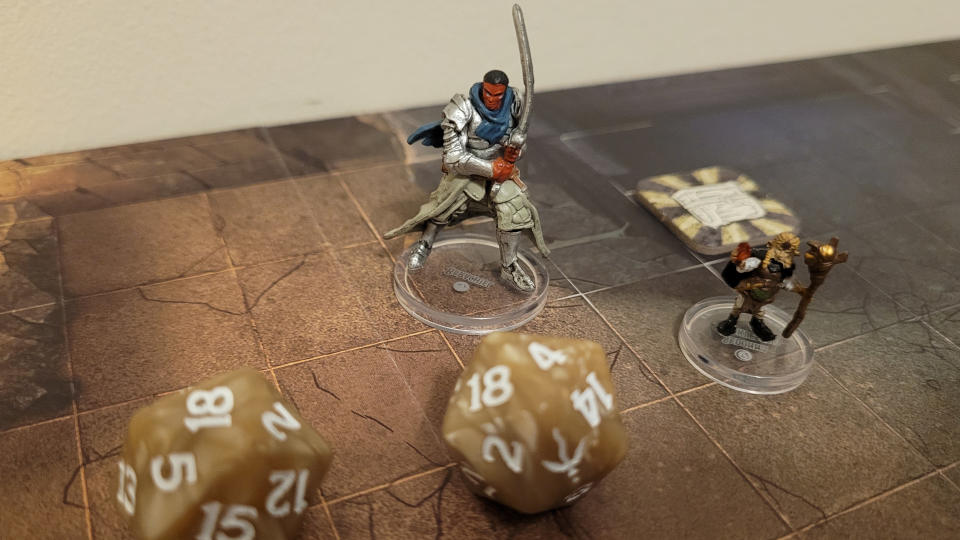
While Dungeons & Dragons: Onslaught has the potential to provide a lot of fun, it's hard to escape the feeling that it doesn’t do quite enough to stand tall in its crowded corner. There are other skirmish games that are more accessible and have better value while offering deeper strategies and richer variety.
However, the dungeon setting, complete with treasure looting and monster fighting, is novel enough to tempt even jaded skirmish gamers. Dungeons & Dragons fans will also get extra mileage from using the figures in role-playing sessions.
Buy it if...
Don't buy it if...
How we tested Dungeons & Dragons: Onslaught
I played Dungeons & Dragons: Onslaught multiple times with each faction (and through its various scenarios) to get a feel for how it compares to rival skirmish games.
For more information on our process, see how we test products.
For more recommendations, check out the best board games, these essential board games for 2 players, and the top board games for adults.

